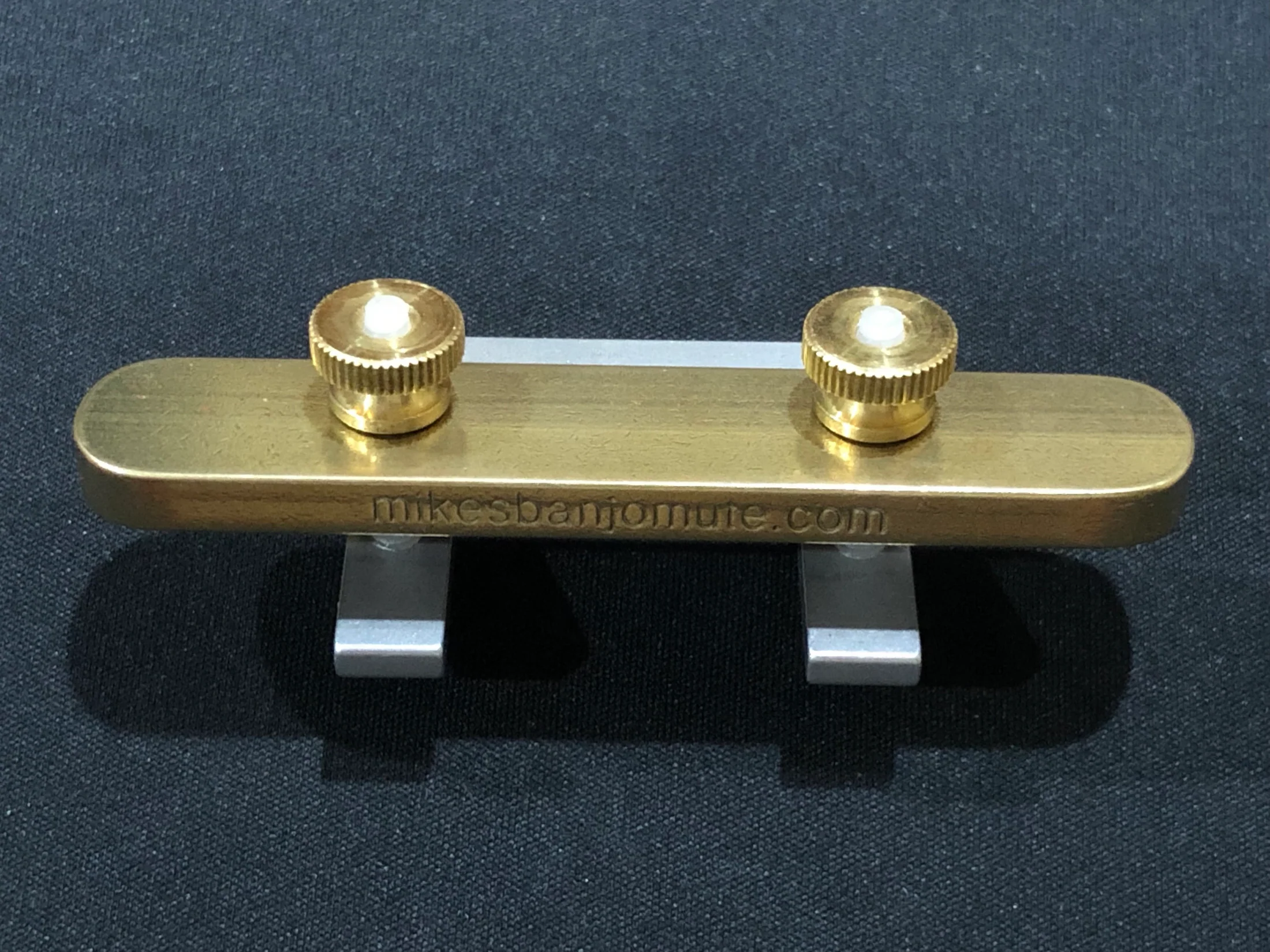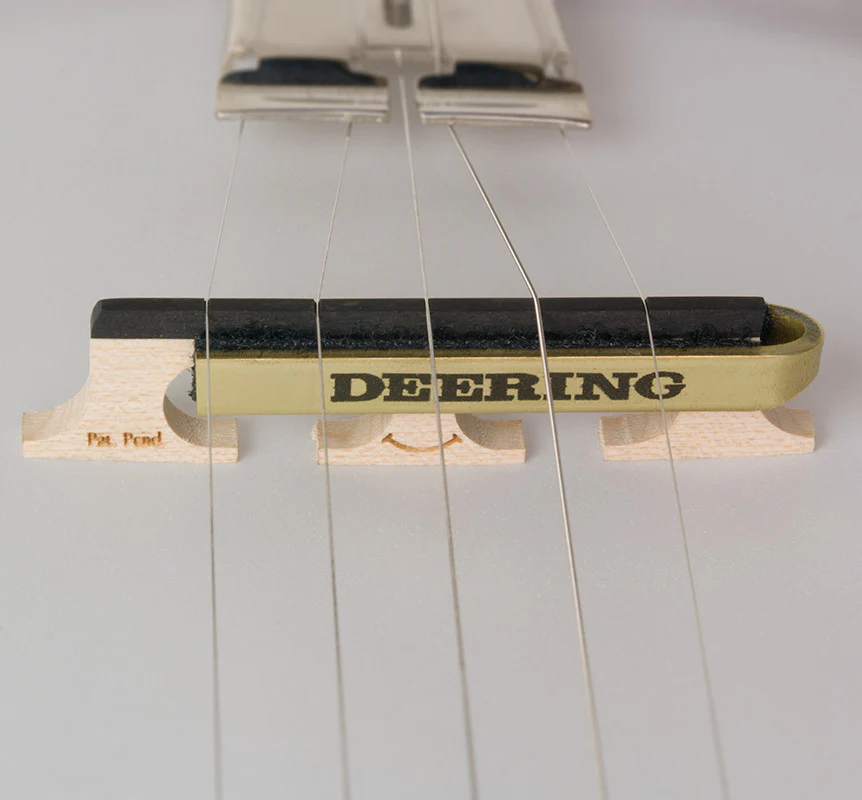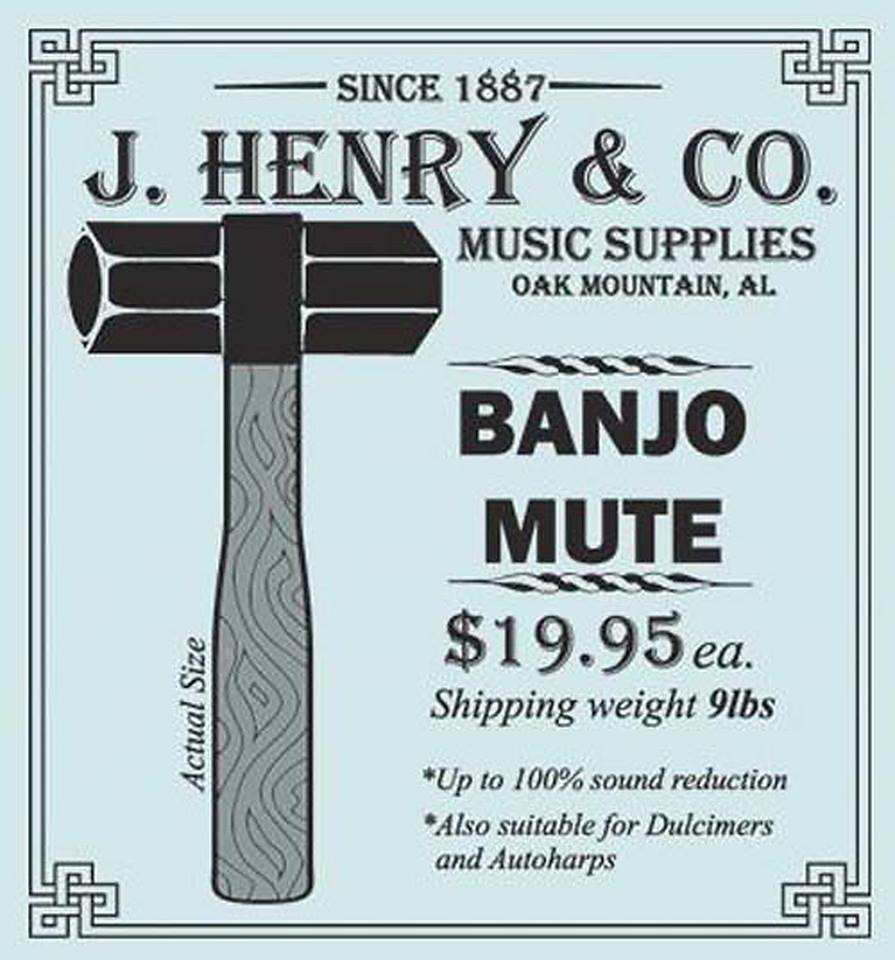Banjo Mutes Explained: 3 Easy Ways to Quiet Your Banjo
Oct 16, 2025If you’ve ever wanted to practice your banjo late at night — or you share a house with someone who doesn’t share your passion for the banjo (losers!) — you’ve probably thought about getting a banjo mute.
Let's look at 3 types of banjo mutes.
1. Mike's Banjo Mute
Mike's banjo mute is probably our favorite mute. It's made of brass, gives the banjo a beautiful harp-like sound, and it dampens the volume 80 - 90% (watch the video to hear the demo).
It has hooks that slide under the bridge, and then the brass bar is tightened down on top of the strings, sandwiching them between the brass bar and the bridge itself. This is how it gets the big reduction in sound.
It's the most expensive of the mutes coming in close to $50 but should last you a very long time. With this banjo, you can really play day or night.
In our Practice Toolkit course, we discuss, in-depth, the importance of having a mute and how often it plays a part in getting consistent practice in. It's 12 lessons and 2.5 hours and will give you a framework to improve your practice vastly!

2. Bridge-Clip Style Banjo Mutes
Similar to Mike's banjo mute, the clip-style banjo mute uses the bridge in order to dampen the sound.
Deering and Goldtone both make a version of this mute.
Unlike Mike's (which clamps down on top of the strings), the clip-style slides onto the bridge, sideways, UNDER the strings.
The inside of the clip has felt, which acts as a buffer to the vibration and keeps the clip on.
This dampens the sound by approximately 50-60%. Not as good, but still good.
These tend to run in the $25 - $35 range. While they are typically made of brass, many of the reviews we've read talk about the felt wearing off as you take the mute on/off over time, making it less effective. Your mileage may vary.

(image courtesy of Deering banjos)
3. The Free Banjo Mute: Tissue Paper
This is not a joke. As you'll see in the video, it's an easy way to mute the banjo and (assuming you already have some in the house) it's free!
The downside? There are several. You can't easily remove and reinstall the tissue, and you need to be careful not to accidentally move the bridge or push down on the banjo head (which could damage your banjo). Additionally, it only dampens the banjo slightly (approximately 20-30%).
But if you're in a pinch, this can help! Check out the video to compare the dampening.
Which Banjo Mute Should You Use?
If it's in the budget, Mike's banjo mute is easily the best and should last you a long time. Coming up 2nd is a clip-style bridge mute (Deering, Goldtone, and others), and you can consider tissue a backup.
As always, we hope that was helpful!
If you want to see just how important having a mute is and how it can help you greatly increase your practice, check out our Practice Toolkit Course (12 lessons, 2.5 hours) here!
We almost forgot...here's a bonus type of banjo mute (don't actually use this one!):









